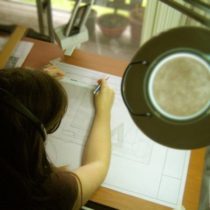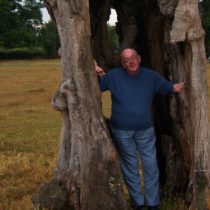Landscape Architecture for Landscape Architects › Forums › GENERAL DISCUSSION › Art Benches
- This topic has 1 reply, 5 voices, and was last updated 16 years ago by
 Kevin J. Gaughan.
Kevin J. Gaughan.
-
AuthorPosts
-
December 16, 2009 at 1:20 pm #171967
 Terry DeWan, FASLAParticipant
Terry DeWan, FASLAParticipantCould anyone help with a budgetary question? I’m working with an arts committee who is organizing a public arts project around the theme of artist-created benches. (See Art Benches in the Gallery for some examples from other cities that I’ll be showing the committee.) What is a reasonable price range for an artist-created bench? We have a certain figure we’re considering for an overall budget and would like to have some sense of how many pieces might be created…. realizing that there are many variables related to material costs, transportation, installation, etc. Thanks!
December 16, 2009 at 6:36 pm #171971 Kevin J. GaughanParticipant
Kevin J. GaughanParticipantTerry…I think this sounds like a really cool project. Looking at the pictures you put in that gallery, I would guess most of those benches commissioned for 5 to 10 thousand dollars (i bet a couple of those could have been closer to 15). I just got back from a trip through central america and got some pictures of some pretty awesome benches, i will post them when i finish going through the pics. In the meantime, here is a really awesome mosaic bench I saw in Lima. Good Luck!
December 16, 2009 at 9:06 pm #171970 david maynesParticipant
david maynesParticipantTerry,
could the art benches be themed around reuse and reinvention of nontraditional materials? this might reduce materials cost, obligate creative thinking, recognize cultural context (ex. old lobster fishing equipment, etc), and promote sustainable solutions for experiential purposes. Im originally from Maine, and one thing Maine artists seem to excel at is taking random stuff and making it interesting!December 17, 2009 at 4:41 am #171969 Bria Sativa AguayoParticipant
Bria Sativa AguayoParticipantThis definitely sounds interesting. I guess I would want to know more about the project and it’s cause to know completely. Is it for public beautification?
Saying that, In my experience 2k-10k would be a round about retail (depending, like Clay said) but I would thing there are artists that would be willing to do a project for a lower rate for the right venue.Bria Sativa Aguayo
http://www.briadesigns.netDecember 18, 2009 at 2:14 am #171968 Les BallardParticipant
Les BallardParticipantLocal authorities publish a price including maintenance and lifespan for benches placed in area with a little plaque to commemorate folk. This often seems dear but of course the more famous the artist the higher will be the cost and fee until you get really silly.
A competition or challenge to colleges and/or youth organisations can get results and so can this idea from an inveterate tree nut. You plant a 3 foot sapling with low branches then, at an angle across it another, longer, standard plus sapling at an acute angle. Pruning is necessary but you can then grow a bench that stays alive (watering helps). Until it is usable it has to be fenced off with a short life cheap bench in front of it for use meanwhile. A tree nearby of normal size, though not a big forest tree, is always helpful to allay fears of lightning strike and indeed this one can have a notice not to stand under it in the rain and even its own lightning rod. It is nice if one of the trees makes shade and supplies fruit. It is ony a few years before people can sit on the angled trunk and so people shape it as it grows. In the event of vandalism any tree can be replaced but you do not interfere with heart/initial carving or anything just do not use a dear tree, just a straighter one. It will curve upwards from the crown the other side from the upright’s crown and intermingle with the small upright one which can be nice. I have even contemplated old ivy pulled from dead trees and transplanted to form the bench in a few strands linking up with a bigger tree to act as a new host. A holly would be great for this season – the holly and the ivy do of course represent the pagan god (killed at solstice til next year) and the goddess. If ivy is cut it goes real hard by the way and this is true even of thin whippy lengths, it really is a timber that can be used as such so you do not need to replace one or two strands that die if at least one survives. What you will have to do is trim new shoots but always keep one going round all the others. You can also plant rees in a line and part cut then bend them like laying a hedge after a few years.
It is worth considering chain saw art. This is logs and stumps carved into benches and seats and is relatively cheap to commission or even knock up yourself. I would prefer bark off and treated final items, pierced with rods and concreted into ground though in a more rustic environment pickets can be used to stabilise round logs. Seats can depict forest animals, be a person whose lap you sit in, or just be plain. Treatment depends on specie, desired lifespan, rainfall and environment re borers, etc. Some items could be oiled or otherwise treated.
A kids dinosaur in a swamp that was actually a slide is an idea of mine with safety barriers and paths to and fro in a park with a swampy pond and to go with it seats or benches were suggested. Everything was to be made from scrap cars with an emphasis on rounded edges and safety. One idea to go with this was headlamps as eyes and a low voltage feed provided by a solar panel and battery to light stuff up as dusk fell. Kids up in the mouth of the dinosaur ready to slide down the neck could be seen through the mouth but a cage inside prevented kids from accessing teeth though they were to be blunted and coated too. The whole thing, of course, had to be treated against rust but was approximately free for such a big thing. Surrounding trees were to be thinned to allow in light and air to allow still living trees sticking out of the pond to flourish as they were all covered in mould, etc. This saved felling, draining and expensive work while retaining a unique microenvironment that looked primeval and, walking a tightrope, could mostly be kept that way. Thorn bushes were to prevent access to the shoreline save on the opposite side from the dinosaur which was open and grassed, with spring bluebells, though I suggested hyacinths be planted too for the smell. Gee that pond ponged!
I hope this has given you some food for thought even if not directly useful.
Luv n Lite,
Les Ballard
.
-
AuthorPosts
- You must be logged in to reply to this topic.


